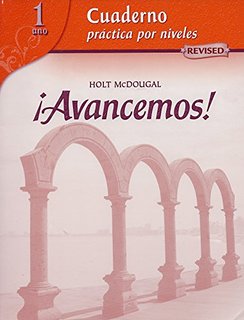
All Solutions
Page 122: Vocabulario A
The purpose of this exercise is to practise Spanish vocabulary.
In this exercise, you are given a family tree. Study it carefully and head onto the statements section. You will whether given kinships are correctly defined or not. You may follow the below solutions for further guidance.
2. C
3. F
4. C
5. C
The purpose of this exercise is to practise Spanish vocabulary.
For this exercise, you will consult the family tree as you did for the previous exercise. There are statements about these people’s kinship. You will define each of them based on said family tree. You may follow the below solutions for further guidance.
2. el hermano
3. la hermana
4. los primos
The purpose of this exercise is to practise expressing calendar dates in Spanish.
For this exercise, take today’s date and write it in Spanish in words. Make sure you use the date you solve this exercise on. The below is an example of how a date looks written in words in Spanish.
Hoy es el veintinueve de abril de dos mil veintiuno.
To ask what day it is, you can say “¿Qué día es?”. However, there is a more frequent construction, in which you would use the preposition “a” with the verb “estar”:
A: ¿A qué día estamos?
B: Estamos al 29 de abril de 2021.
Referring to months and years, you would either ask “¿Qué mes/año es?” or you could again use the verb “estar”, but this time with the preposition “en”:
A: ¿En qué mes estamos?
B: Estamos en abril.
The above examples are used when you want to know the date. Note how in all cases you use the verb “estar”. For all other references, you would simply use the definite article “el”:
Hago la tarea el 29 de abril de 2021.
I do my homework on the 29th April 2021.
Additionally, in Spain, you would usually write the date as dd/m/(aa)aa, e.g. 29/4/2021 or 29/4/21. For administrative purposes and due to a quicker response, in certain ambients like offices it will not be uncommon to hear “el veintinueve de cuatro de veintiuno”. However, in any other ambient, the month will be pronounced by its name rather than by its corresponding number.

